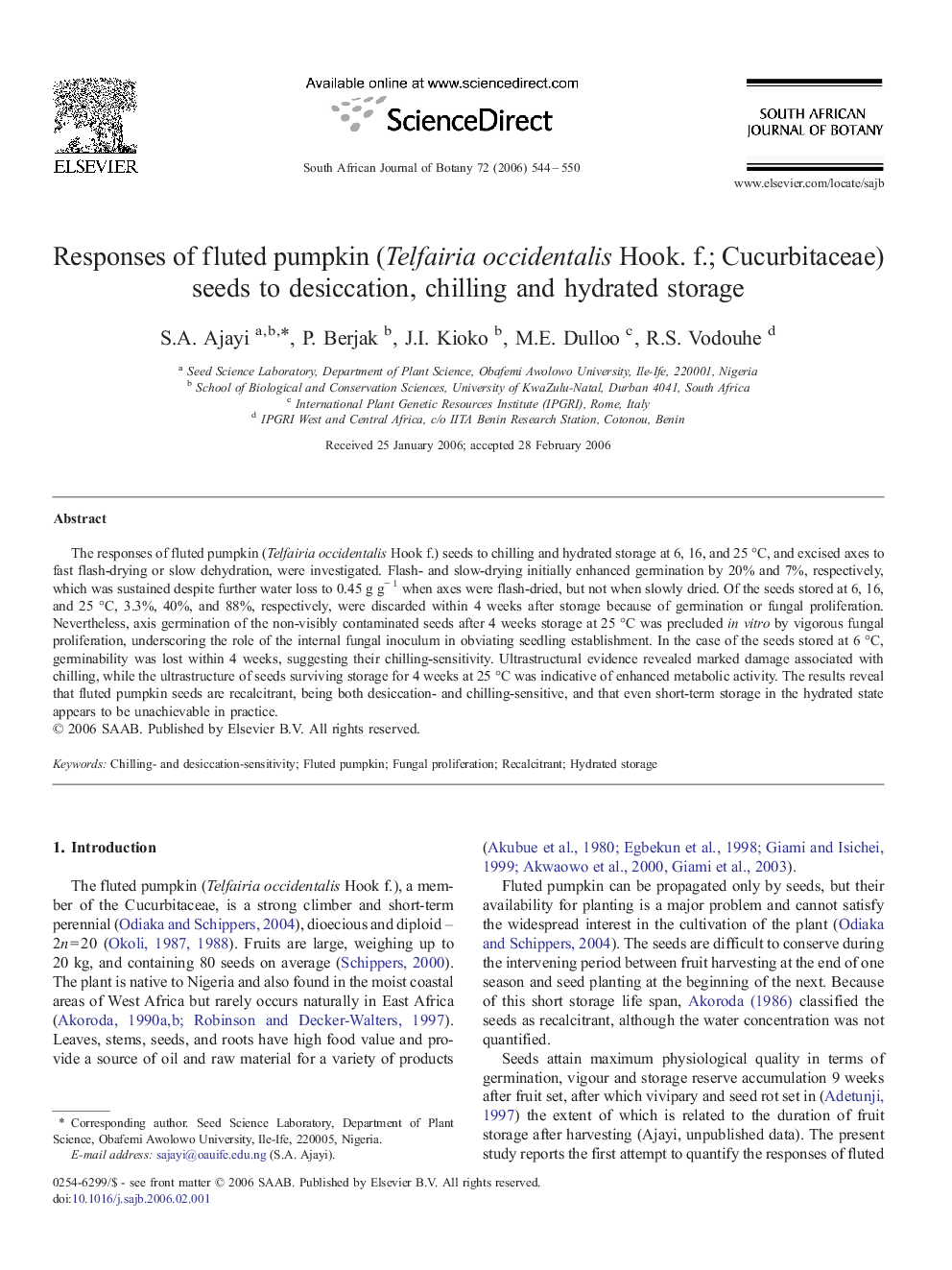| Article ID | Journal | Published Year | Pages | File Type |
|---|---|---|---|---|
| 4521792 | South African Journal of Botany | 2006 | 7 Pages |
Abstract
The responses of fluted pumpkin (Telfairia occidentalis Hook f.) seeds to chilling and hydrated storage at 6, 16, and 25 °C, and excised axes to fast flash-drying or slow dehydration, were investigated. Flash- and slow-drying initially enhanced germination by 20% and 7%, respectively, which was sustained despite further water loss to 0.45 g gâ 1 when axes were flash-dried, but not when slowly dried. Of the seeds stored at 6, 16, and 25 °C, 3.3%, 40%, and 88%, respectively, were discarded within 4 weeks after storage because of germination or fungal proliferation. Nevertheless, axis germination of the non-visibly contaminated seeds after 4 weeks storage at 25 °C was precluded in vitro by vigorous fungal proliferation, underscoring the role of the internal fungal inoculum in obviating seedling establishment. In the case of the seeds stored at 6 °C, germinability was lost within 4 weeks, suggesting their chilling-sensitivity. Ultrastructural evidence revealed marked damage associated with chilling, while the ultrastructure of seeds surviving storage for 4 weeks at 25 °C was indicative of enhanced metabolic activity. The results reveal that fluted pumpkin seeds are recalcitrant, being both desiccation- and chilling-sensitive, and that even short-term storage in the hydrated state appears to be unachievable in practice.
Keywords
Related Topics
Life Sciences
Agricultural and Biological Sciences
Agronomy and Crop Science
Authors
S.A. Ajayi, P. Berjak, J.I. Kioko, M.E. Dulloo, R.S. Vodouhe,
